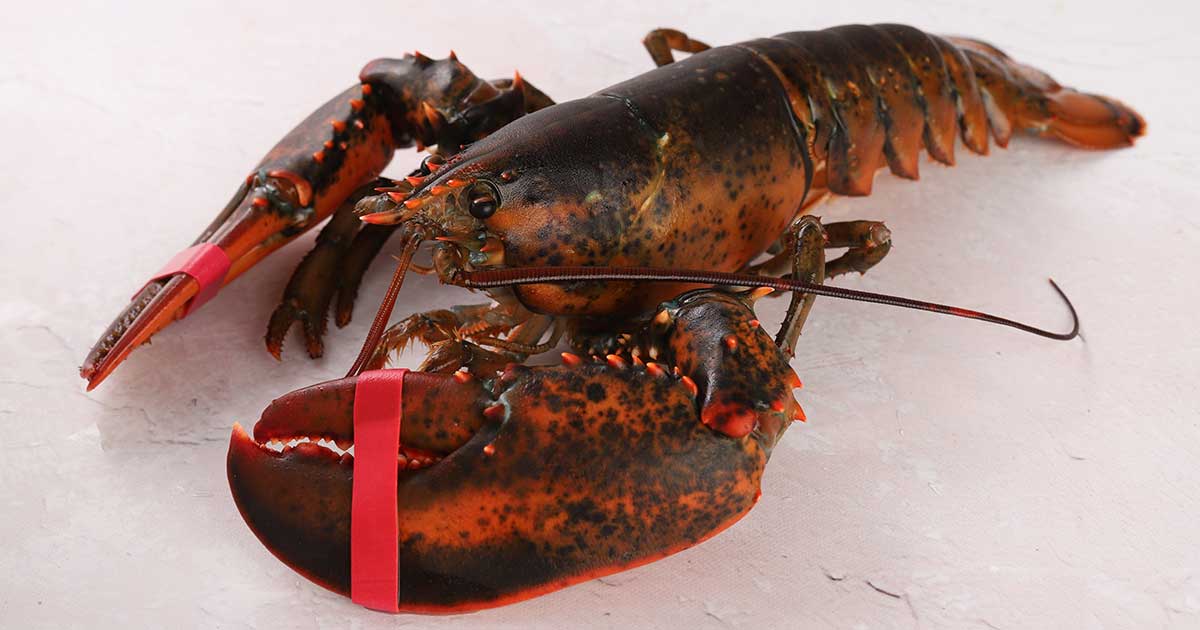Lobsters are one of the most iconic seafoods, with their large claws and armored bodies. But there is some debate around whether these crustaceans are cold blooded or warm blooded. As waters warm, more and more problems are coming up for lobsters, so understanding their biology is important. In this article, we’ll cover the details on lobster blood and thermoregulation to answer the question: are lobsters cold blooded?
What Does Cold Blooded Mean?
Cold blooded animals, also known as ectotherms, are species that lack the ability to regulate their internal body temperature. They depend on external heat sources like sunlight or ambient environment to control their body heat.
When the external temperature drops an ectotherm’s body temperature also drops. And when the outside environment heats up the animal’s internal temperature follows. This is why you see reptiles and amphibians basking in the sun—they need that external heat to stay warm.
Warm blooded animals (endotherms) like mammals and birds maintain a consistent internal body temperature no matter what the external environment is. They produce heat internally by ramping up their metabolic rate rather than relying on outside factors.
- Cold blooded = body temperature varies with external temperature
- Warm blooded = body temperature stays consistent despite external temperature
This distinction is important for understanding how lobsters manage heat.
Lobsters Are Ectotherms
Lobsters are cold blooded animals, meaning they are ectotherms. Their body temperature is not internally regulated but rather depends on the temperature of the water they live in.
Here are some key facts about temperature regulation in lobsters:
-
Lobsters cannot generate their own internal body heat or regulate their temperature metabolically
-
As the temperature of the water changes, so does the lobster’s internal body temperature.
-
Lobsters rely on moving between waters of different temperatures to raise or lower their body heat.
-
They tend to prefer temperatures between 12-18°C (54-64°F) but can survive temperatures from 0-30°C (32-86°F).
-
Rapid temperature changes can shock a lobster’s system. Gradual acclimation allows their tissues to adapt to the new temperature.
-
When waters exceed 20°C (68°F), lobsters become physiologically stressed. Prolonged exposure to temperatures over 23°C (73°F) can be fatal.
So in both form and function, lobsters are cold blooded ectotherms. Their circulatory system is designed to distribute heat absorbed from their environment rather than self-regulate a constant internal body temperature.
Why Are Lobsters Vulnerable to Warming Waters?
Lobsters’ status as cold blooded makes them vulnerable as ocean waters warm with climate change. Sea temperatures in the Gulf of Maine have increased by around 3-4°C (5-8°F) over the past 15 years alone. For ectothermic lobsters, even small changes in water temperature can impact:
- Metabolism and growth rates
- Reproduction and development
- Susceptibility to shell disease and other health issues
- Distribution and habitat ranges
Lobsters thrive best within a limited temperature range. As waters continue warming, lobsters are pushed closer to their physiological limits. Their cold blooded biology prevents them from adapting their internal temperature like warm blooded species can.
Rising ocean temperatures in southern New England have already led to lobster populations declining and moving northward. The Gulf of Maine now produces over 80% of U.S. lobster, whereas Long Island Sound lobster fisheries have collapsed.
Understanding the limitations of being cold blooded helps explain why lobsters are so affected by marine heat waves and changing ocean conditions. Their ectothermic nature leaves them dependent on water temperatures staying within an ideal range.
Unique Features of Lobster Blood
While lacking in temperature regulation, lobster blood does have some unique properties worth mentioning:
-
It is transparent blue in color because the respiratory pigment hemocyanin contains copper atoms instead of iron atoms like hemoglobin in vertebrates.
-
Lobster blood viscosity and stickiness allows it to clot rapidly when wounds form in their shell. This helps prevent infection or loss of blood.
-
Blood cell composition is different than vertebrates with several special cell types like hyalinocytes and granulocytes that help transport nutrients and fight injury/infection.
-
Lobsters have an open circulatory system with blood contained in sinuses and vessels.
So while different than human blood, lobster hemolymph still serves important functions like transporting nutrients and oxygen. Their circulatory system just lacks specialized temperature control mechanisms.
Lobsters are definitively cold blooded animals. They rely entirely on ambient water temperature to regulate their internal body temperature. As ectotherms, lobsters cannot self-regulate a constant internal heat like warm blooded species.
This makes lobsters especially vulnerable to marine heat waves and changing ocean conditions driven by climate change. Their biology and ecology are adapted for set temperature ranges. So as waters continue to warm, lobster populations face mounting physiological stresses. Understanding their cold blooded status helps explain why these iconic crustaceans are so affected by shifts in their environment.

Are lobsters poisonous if they die before being cooked?
Lobsters are not poisonous if they die before cooking, but you should cook them quickly. Many lobsters sold commercially are killed and frozen before cooking. Because lobsters and other crustaceans go bad quickly after they die, many buyers insist on getting them while they are still alive.
Why does a lobster turn red when cooked?
The red pigment is the most stable component of the coloring in a lobster shell. The greens and browns which darken the shell in a live lobster are destroyed by cooking.
What Fish Feel When They Are Killed for Food | NowThis
FAQ
Can lobsters survive in cold water?
Does a lobster have blood?
Why aren’t lobsters killed before boiling?
Why is lobster blood green?
